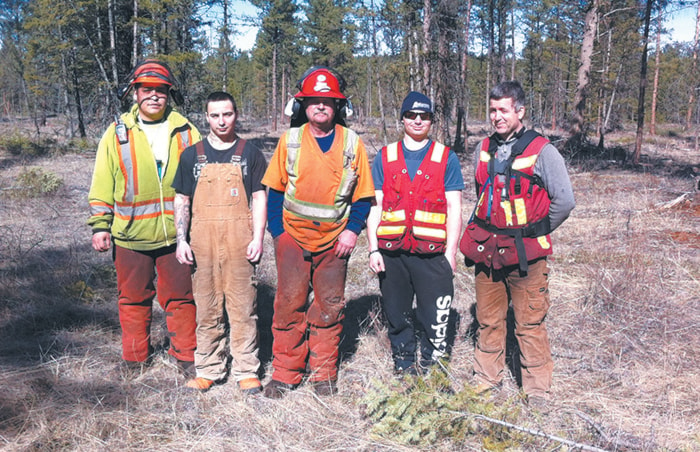Submitted
Exceptional winter-range habitat for ungulates is being restored to increase forage and reduce forest-fire fuels around Elko. The ecosystem restoration (ER) treatments have been ongoing since 2014 and will continue (in the form of tree pruning and a broadcast burn) into 2016.
The site, immediately adjacent to Highway 3/93, south of Elko, is class five winter range for bighorn sheep, moose and mountain goat, class one for elk and class one to three for whitetail and mule deer.
“This is key ungulate habitat,” said Larry Ingham, project biologist with the Ministry of Forests, Lands and Natural Resource Operations. “It’s also habitat for badgers — a red-listed predator — and ground squirrels, their main food source.”
The total treatment area of 66.5 hectares has undergone various treatments to bring the number of trees down to open-forest and open-range densities.
“We’ve been using mechanical thinning and mulching, hand slashing and harvesting to thin the treatment area,” said Dan Murphy, coordinator with the Rocky Mountain Trench Natural Resources Society. “We hadn’t planned on harvesting, but a major wind event in November of 2014 blew down many of the ‘leave’ trees.
Murphy added, “We were able to arrange it so these trees could be removed on a cost-recovery basis.”
The site is not only key ungulate habitat, it’s also used for domestic cattle.
“There’s a lot happening on this site,” said Murphy. “Along with its value for wildlife, it’s tenured range land for cattle grazing, there is fencing and there are riparian areas — creeks and springs — to consider.”
Riparian areas were avoided during treatment and several tree thickets were left to provide cover for wildlife.
The area is in the Elko Wildland Urban Interface (WUI) Area, therefore, the ecosystem restoration work completed will have positive fuel management benefits to Elko. Pruning of residual trees, primarily Douglas fir, will be completed in 2015 to remove the ladder fuels in preparation of the broadcast prescribed burn planned in 2016.
This project was completed as part of the Rocky Mountain Trench Ecosystem Restoration Program with financial support from the Fish and Wildlife Compensation Program on behalf of its program partners BC Hydro, the Province of B.C., Fisheries and Oceans Canada, First Nations and the public. The Province of B.C. is providing funding through Land Based Investment Funds.
